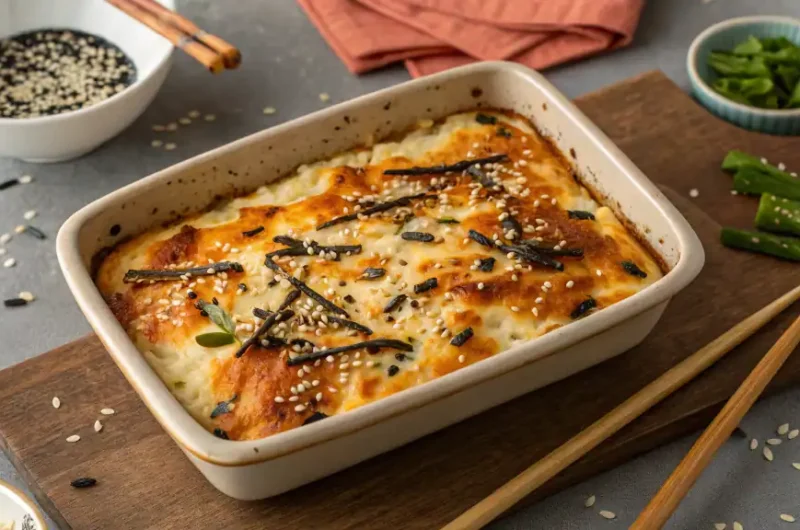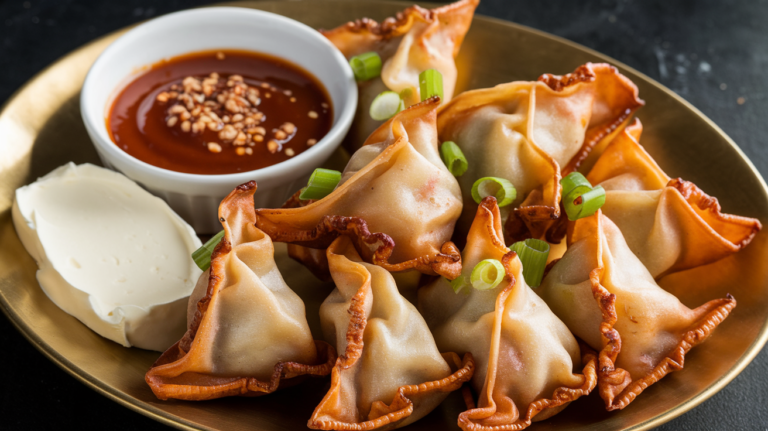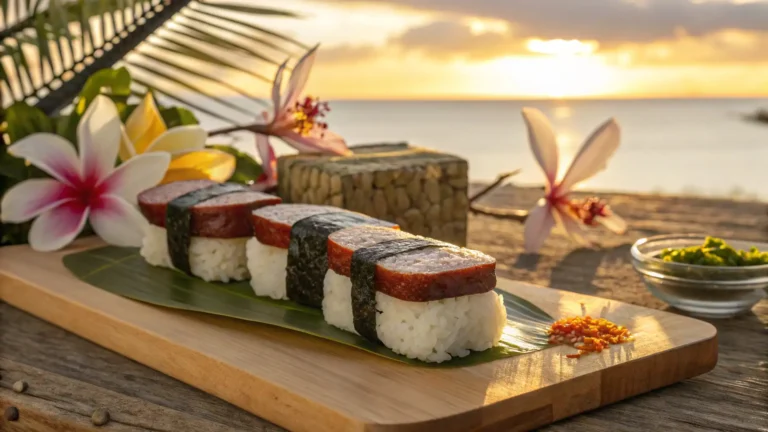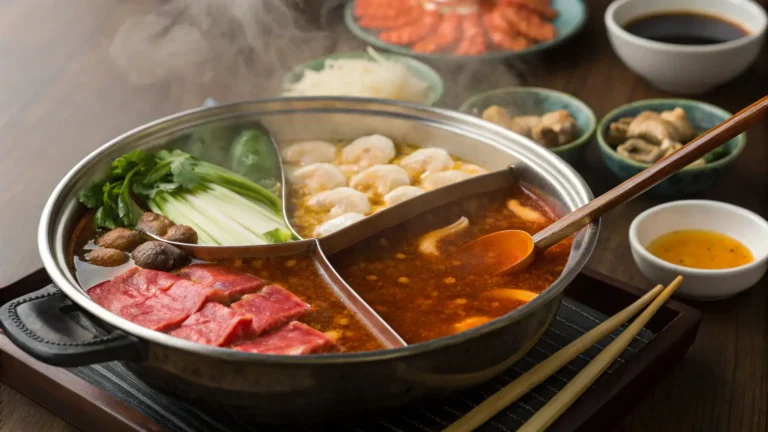Japanese Inspired Salmon Sushi Bake You Can Make at Home
Transform traditional sushi into a baked sensation with this salmon sushi bake, a Japanese fusion dish that’s both flavorful and satisfying.
JUMP TO RECIPE
What Is Sushi Bake?
If you love sushi but don’t want the hassle of rolling it, I’ve got a fantastic solution for you: salmon sushi bake. This dish combines the delicious flavors of sushi into a simpler, baked format. Making salmon sushi bake is easy and satisfying, allowing you to enjoy the rich taste of salmon and the comfort of warm rice in every bite.
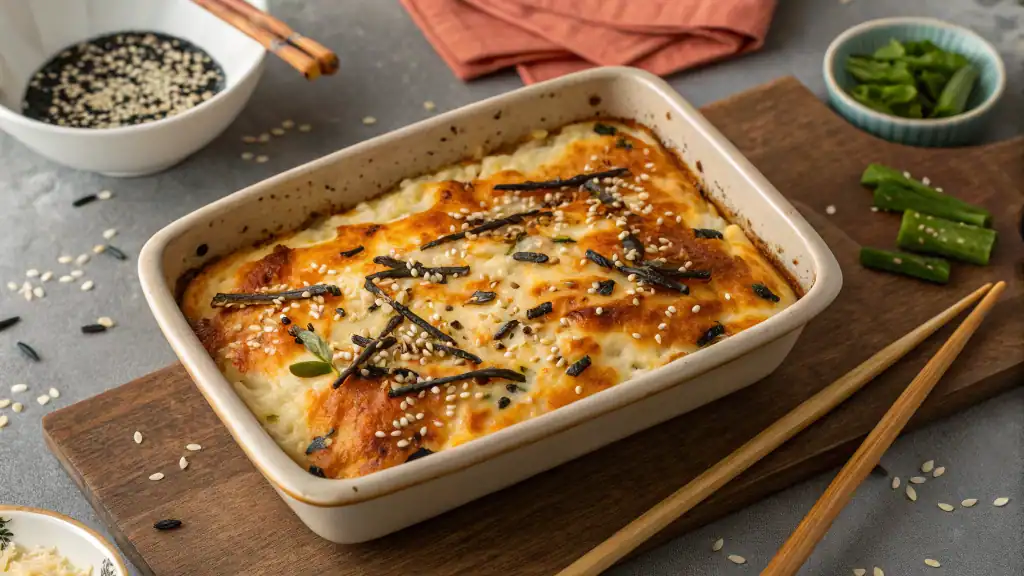
To start, you’ll need a few key ingredients like sushi rice, salmon, and some toppings to enhance the flavor. The preparation is straightforward: simply cook the rice, prepare the salmon, and layer everything in a dish before baking. Trust me, it’s a perfect way to feed a crowd or enjoy a cozy night in.
Whether you’re hosting a gathering or looking for a quick meal option, salmon sushi bake is a delightful choice. With endless possibilities for customization, you can make it your own based on what you love or have available at home. Start your meal with crispy Crab Rangoon as the perfect appetizer to complement this dish.
Key Takeaways
- Salmon sushi bake combines the flavors of traditional sushi in a baked dish.
- The recipe is simple and customizable with various toppings.
- This dish is perfect for gatherings or a comforting meal at home.
Sushi Bake Ingredients
To make a delicious salmon sushi bake, I focus on selecting the right type of salmon, preparing the sushi rice, and choosing the best condiments and toppings. Each element is crucial for achieving the perfect flavor and texture.
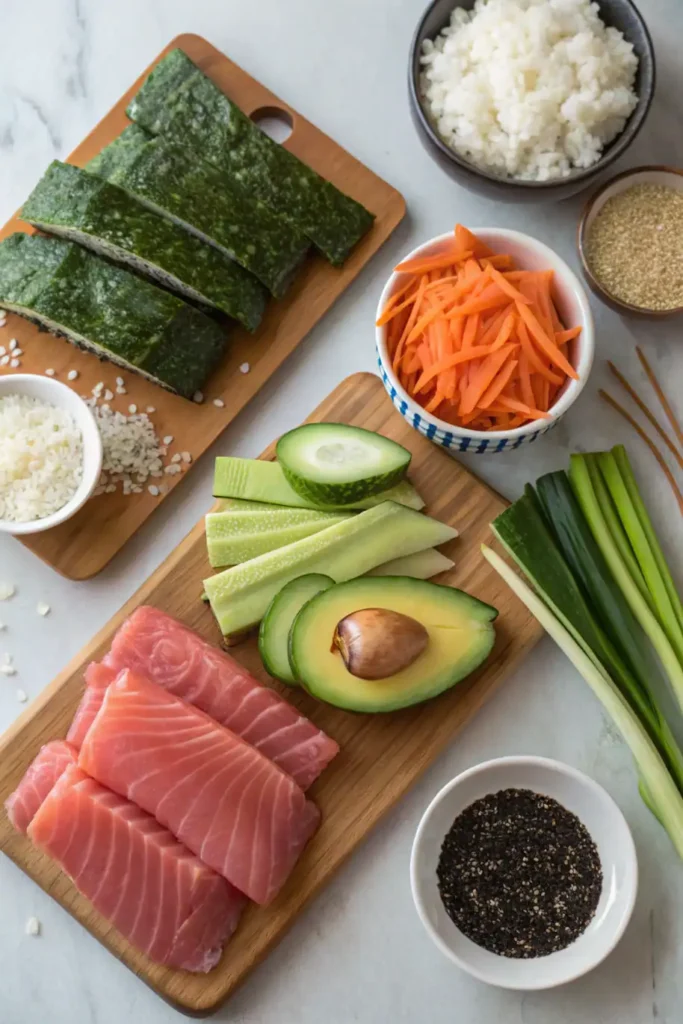
Salmon Selection
For the salmon, I prefer using a fresh fillet. It should be firm and bright in color, showing signs of high quality. If fresh salmon isn’t available, frozen salmon that has been properly thawed can also work well. I always check for any pin bones before cooking.
Sometimes, I opt for other proteins like imitation crab for a different twist. This ingredient has a nice texture and adds a unique flavor. Remember, the quality of the salmon directly affects the dish, so choose wisely.
Sushi Rice Preparation
I use short-grain sushi rice for the best results. This type of rice becomes sticky when cooked, helping it hold together. I start by rinsing the rice to remove excess starch, which helps improve texture.
Next, I cook the rice with a 1:1 ratio of rice to water in a rice cooker or pot. Once cooked, I mix in seasoned rice vinegar, sugar, and salt for added flavor. This combination gives the rice a slight tanginess that balances the richness of the salmon.
Choosing Condiments and Toppings
Condiments and toppings can elevate the flavor of my sushi bake. I often use kewpie mayo, which is a Japanese mayonnaise known for its creamy texture and slight sweetness. This can be drizzled over the bake after it’s out of the oven for a rich finish.
Other options include soy sauce or teriyaki sauce for a savory kick. I like to sprinkle furikake over the top for added umami and a touch of color. Finally, sesame seeds and thinly sliced green onions can provide a nice crunch and freshness.
I sometimes incorporate elements like cream cheese for a creamy texture or spicy mayo for heat. Each topping can be adjusted according to my taste preferences. Pair your creamy Salmon Sushi Bake with a bubbling hot pot for a delightful, hearty meal.
How To Make Salmon Sushi Bake
I prepare my salmon sushi bake in several key steps to ensure great flavor and texture. The process includes layering the sushi base, creating a flavorful salmon mixture, and finally assembling the toppings for the perfect dish.
Step 1: Layering the Sushi Base
First, I start by cooking the sushi rice. I measure out 1 ½ cups of sushi rice and rinse it thoroughly under cold water until the water runs clear. This helps remove excess starch. Then, I cook the rice according to the package instructions, usually about 15 minutes. After cooking, I let it sit for 5 minutes.
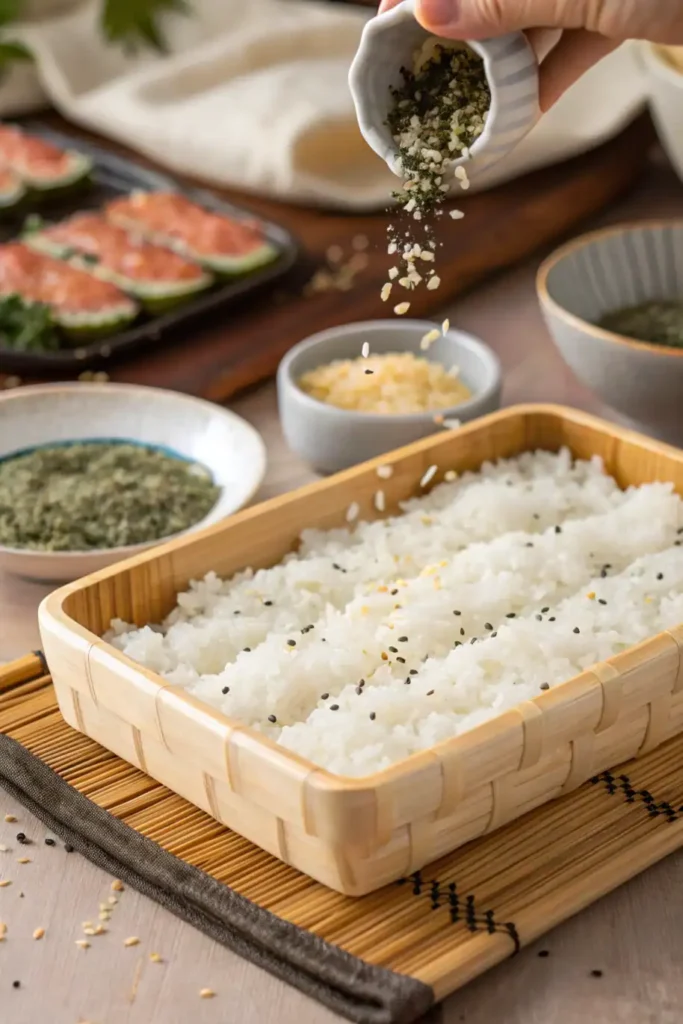
Once the rice is ready, I spread it evenly in a baking dish. This creates a sturdy base for the sushi bake. I make sure to season the rice with a bit of rice vinegar, which adds a slight tang. At this point, I also sprinkle in furikake seasoning for added flavor. This mix of flavors ensures a rich base.
Step 2: Creating the Salmon Mixture
Next, I prepare the salmon mixture. Using a broiled salmon fillet works best. I can either use fresh salmon or leftover cooked salmon.
After broiling the salmon for about 10-12 minutes, I allow it to cool slightly and then flake it into small pieces. In a bowl, I combine the flaked salmon with mayonnaise, a splash of soy sauce, and a pinch of salt. This mixture gives the salmon a creamy texture. I also add a sprinkle of furikake for extra flavor.
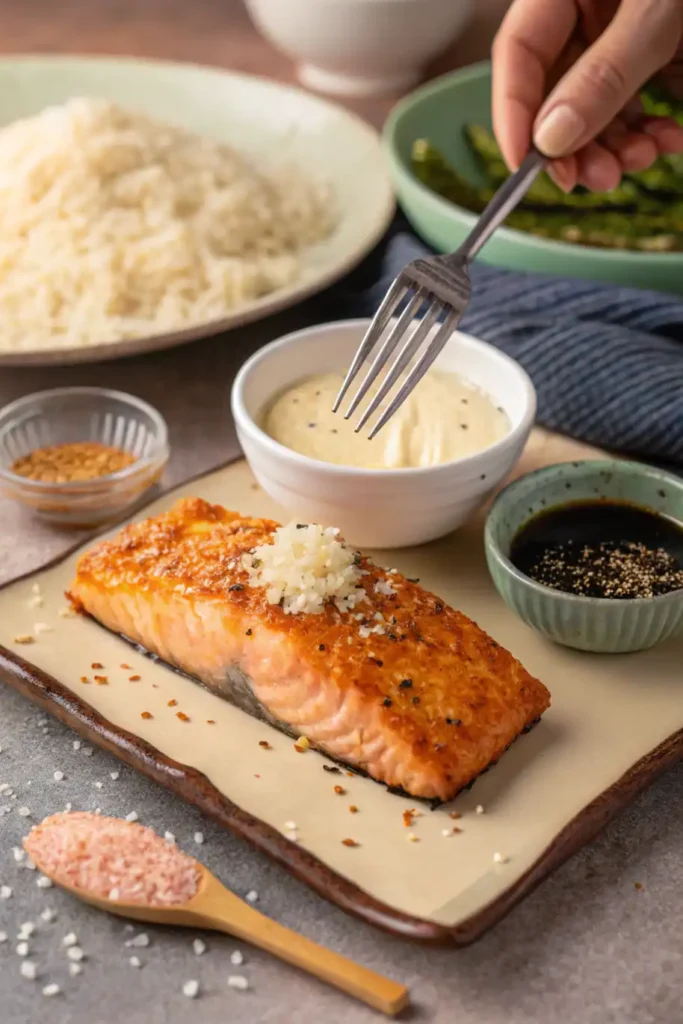
This salmon mixture should have a balanced taste and the right consistency, making it easy to spread later.
Step 3: Assembling the Toppings
Finally, I assemble the toppings to complete my sushi bake. I start by spreading the salmon mixture evenly over the rice layer. On top of the salmon, I add chopped cucumber and avocado for fresh flavor and creamy texture.
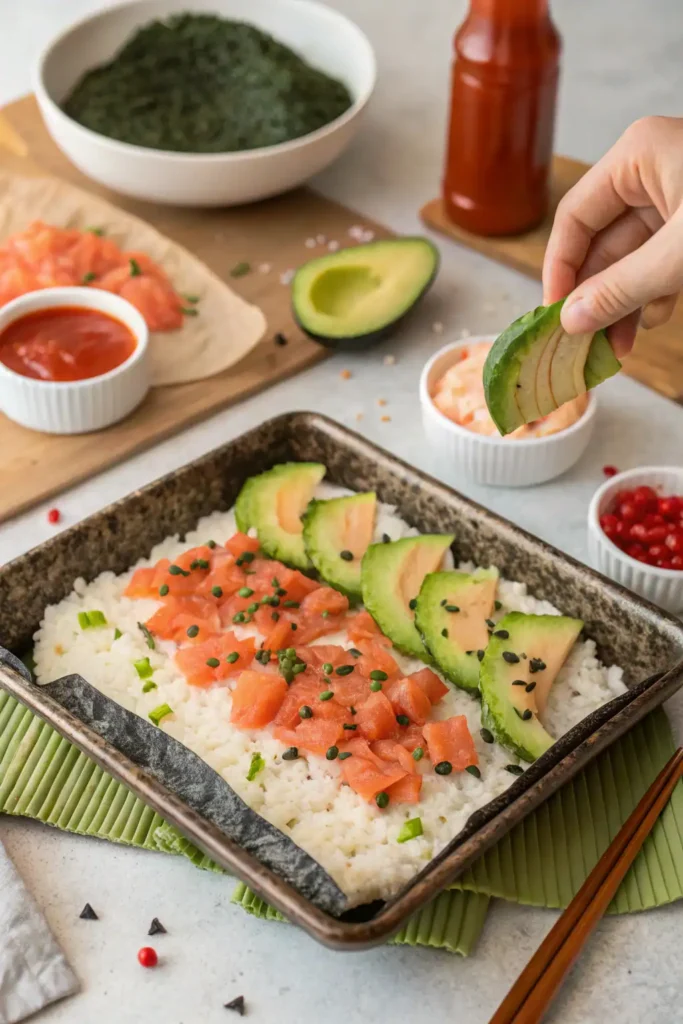
To enhance the appearance, I place nori sheets cut into small strips over the dish. I sometimes add a little drizzle of sriracha for some heat. It’s important to distribute everything evenly for a balanced bite.
Once assembled, I bake the sushi mix at 375°F (190°C) until everything is warm, usually for about 10-15 minutes. This blend of toppings and flavors creates a delicious sushi experience.
Step 4: Cook The Salmon
When making salmon sushi bake, the right baking techniques are crucial for achieving the best results. I focus on oven settings and the finishing touches to create a delicious dish that highlights the flavors of baked salmon and umami.
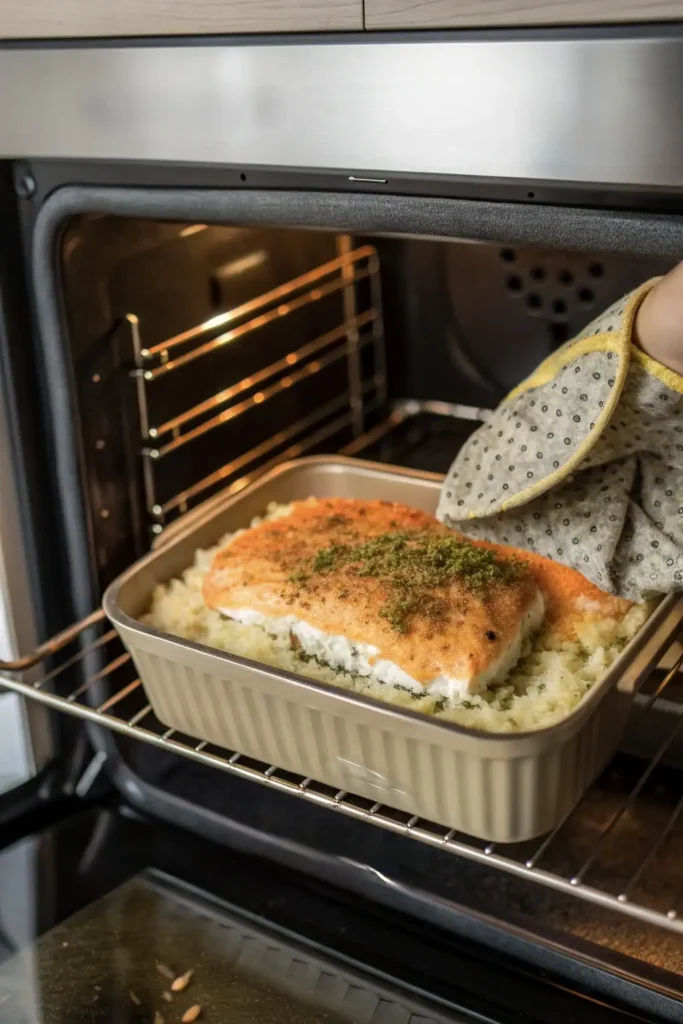
Oven Settings and Timing For Baking
For baking salmon sushi, I usually preheat my oven to 350°F (175°C). This temperature allows the salmon to cook evenly while the layers of rice and other ingredients warm through.
I recommend using a light drizzle of olive oil or butter on top to enhance moisture. Once the dish is assembled, I bake it for around 25-30 minutes.
It’s important to check for doneness; the salmon should flake easily with a fork but not be dry. If time allows, letting it cool for a few minutes before serving helps the flavors meld together.
Broiling for the Perfect Finish
Broiling is my go-to method for giving the salmon sushi bake a crispy top. After the baking time, I switch the oven to broil for about 2-3 minutes.
This quick, high-heat cooking method caramelizes the ingredients and adds a delightful texture. I often watch closely to prevent burning.
I suggest keeping the dish a few inches away from the broiler element. This distance allows for even browning while keeping the salmon moist.
Broiling also intensifies flavors, enhancing the umami aspects of the salmon and toppings. Pair this creamy sushi bake with our Marry Me Chicken Pasta for a hearty and satisfying meal.
Serving and Presentation
I find that serving and presentation make a big difference when enjoying salmon sushi bake. Proper cutting and plating can enhance the dish, while the right accompaniments improve the overall experience. Here are some ideas to make your dish shine.
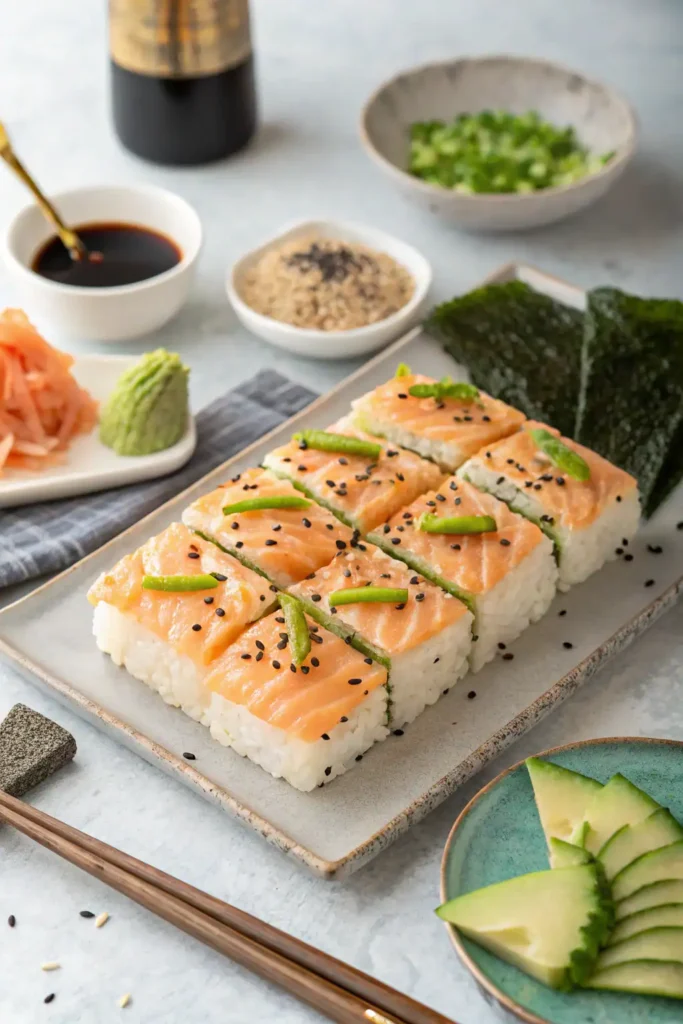
Cutting and Plating
After baking, I let the sushi bake cool for a few minutes. This helps it hold together when I cut it. I use a sharp knife to slice the dish into squares or rectangles, making individual portions.
For plating, I like to arrange the pieces neatly on a platter. I may layer them slightly for a nice visual effect. Using nori sheets on the side gives guests a fun way to create their own sushi rolls. I sometimes add a sprinkle of green onions or sesame seeds on top for a pop of color.
Accompaniments and Side Dishes
To elevate the meal, I serve salmon sushi bake with fresh sides. Sliced avocado and cucumber add freshness and crunch. I often prepare a simple seaweed salad to complement the flavors.
I also set out soy sauce or spicy mayo for dipping. Leftovers can be enjoyed cold or reheated, making them a convenient appetizer or snack. Creating a colorful presentation makes the dish more appealing and provides variety on the plate. For a unique pairing, serve Spam Musubi as a snack or side dish alongside your Salmon Sushi Bake.
Customization and Variations
There are many ways to make salmon sushi bake your own. I love to explore different ingredients and flavors while keeping in mind dietary preferences. Here are some options for customization.
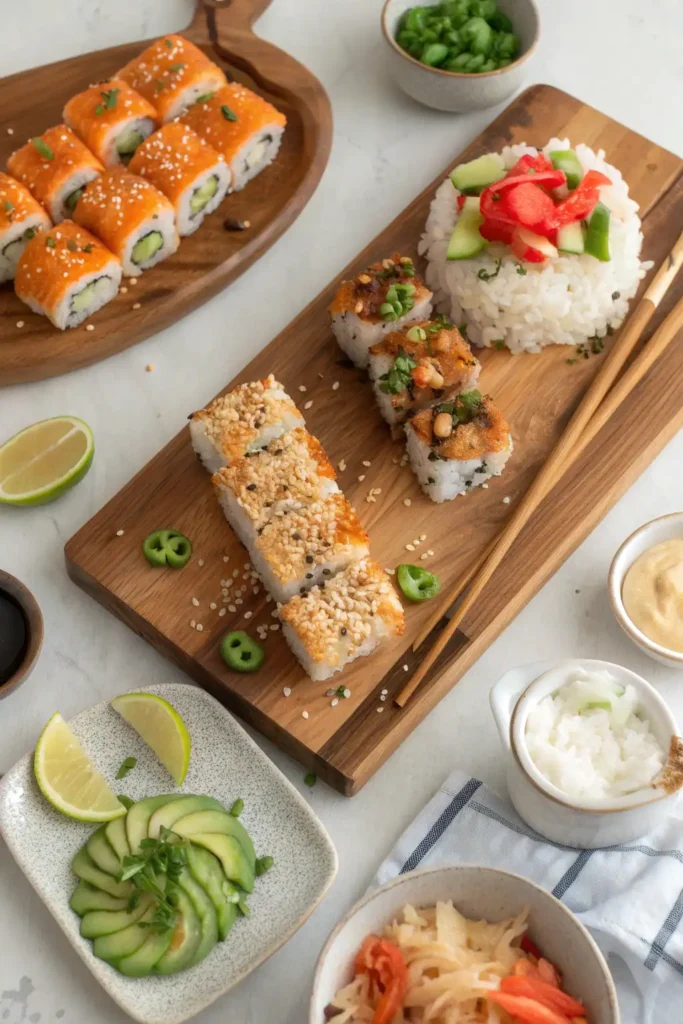
Vegetarian and Gluten-Free Options
To create a vegetarian version, I often substitute canned salmon with cooked mushrooms or a mix of diced vegetables like bell peppers and zucchini. Adding avocado slices provides creaminess and healthy fats. For seasoning, mix coconut aminos with garlic powder to give depth.
If you need a gluten-free option, use gluten-free rice and check sauces for gluten-free labels. Replace traditional soy sauce with toasted sesame oil or more coconut aminos. This keeps the flavors vibrant while meeting dietary needs, ensuring everyone can enjoy this dish.
Alternative Flavor Profiles
I enjoy trying various flavors in my salmon sushi bake. One way is to add sriracha or spicy mayo for a kick. Combining these with lime juice can create a tangy balance.
For a Mediterranean twist, I mix feta cheese and olives with the traditional ingredients. This variation gives it a unique flavor while still being delicious.
Feel free to experiment with wild-caught salmon or different herbs and spices. Each change can make the dish uniquely yours while still maintaining the essence of sushi bake. Finish your feast with a crunchy, sweet treat like Tanghulu for a memorable dessert.
Save Salmon Sushi Bake Recipe
How to Make Salmon Sushi Bake
Course: Seafood, Rice-NoodlesCuisine: Japanese4
servings15
minutes15
minutes30
minutesTransform traditional sushi into a baked sensation with this salmon sushi bake, a Japanese fusion dish that’s both flavorful and satisfying.
Equipment
Baking sheet
Fine-mesh sieve
Pot for cooking rice
Mixing bowl
- Ingredients
2 cups short-grain sushi rice
2 cups water
1/3 cup rice vinegar
3 tbsp sugar
1 tsp salt
1 lb fresh salmon fillet
1 avocado, thinly sliced
1 cucumber, julienned
Directions
- Rinse the sushi rice under cold water until it’s clear.
- Next, cook the rice in a pot for 15 minutes on low heat and let it sit.
- While the rice cooks, I preheat the oven to 400°F (200°C).
- Then place the salmon on a baking sheet and broil it for 15 minutes.
- Finally, mix the rice with vinegar, sugar, and salt. Layer everything in a baking dish and bake it until it's ready to serve.
Salmon Sushi Bake: Frequently Asked Questions
I often get questions about making salmon sushi bake. Here’s some specific information to help with the most common concerns.

